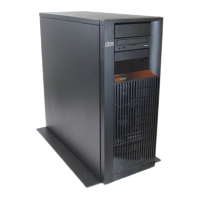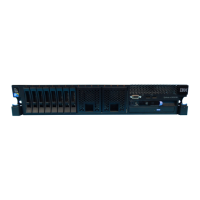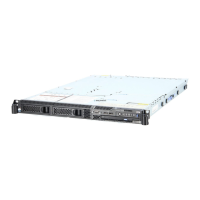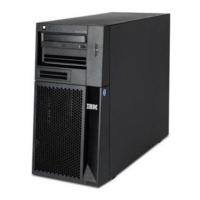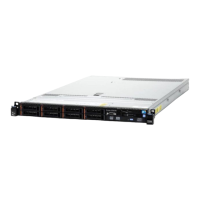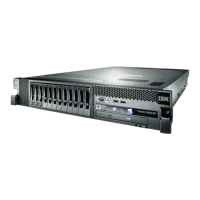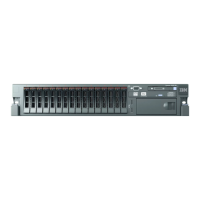6. Record the SRC on the Problem Summary Form (see “Appendix A. Problem
Summary Form” on page 951).
Is the SRC the same one that sent you to this procedure?
Yes No
↓ Go to “Starting Point for All Problems” on page 4 to correct the
problem.
This ends the procedure.
7. Perform the following:
a. Power off the system or expansion tower (see “Powering On and
Powering Off the System and Logical Partitions” on page 922).
b. See “Failing Items” on page 479 to find the devices identified by FI code
FI01106.
c. Disconnect one of the disk units, (other than the load-source disk unit), the
tape units, or the optical storage units that are identified by FI code
FI01106. Slide it partially out of the system.
Note: Do not disconnect the load-source disk unit, although FI code
FI01106 may identify it.
8. Power on the system or the expansion tower that you powered off.
Does an SRC appear on the control panel?
No Yes
↓ Go to step 12 of this procedure.
9. Does the Disk Configuration Error Report display or the Disk Configuration
Warning Report display appear on the console with one of the following
listed?
v Missing disk units in the configuration
v Missing mirror protection disk units in the configuration
v Device parity protected units in exposed mode.
Yes No
↓ Go to step 11 of this procedure.
10. Select option 5, then press F11, then press the Enter key to display details.
Does an SRC appear in the Reference Code column?
No Yes
↓ Go to step 12 of this procedure.
11. Look at all the Product Activity Logs by using the Product activity log option
under DST.
Is an SRC logged as a result of this IPL?
Yes No
↓ The last device you disconnected is the failing item.
Exchange the failing device and reconnect the devices that were
disconnected previously.
Note: Before exchanging a disk drive, you should attempt to save
customer data (see “Recovery Procedures” on page 893).
This ends the procedure.
Disk Unit PIPs
330
iSeries Model 830, 840, SB2, and SB3 Problem Analysis, Repair and Parts V5R1
